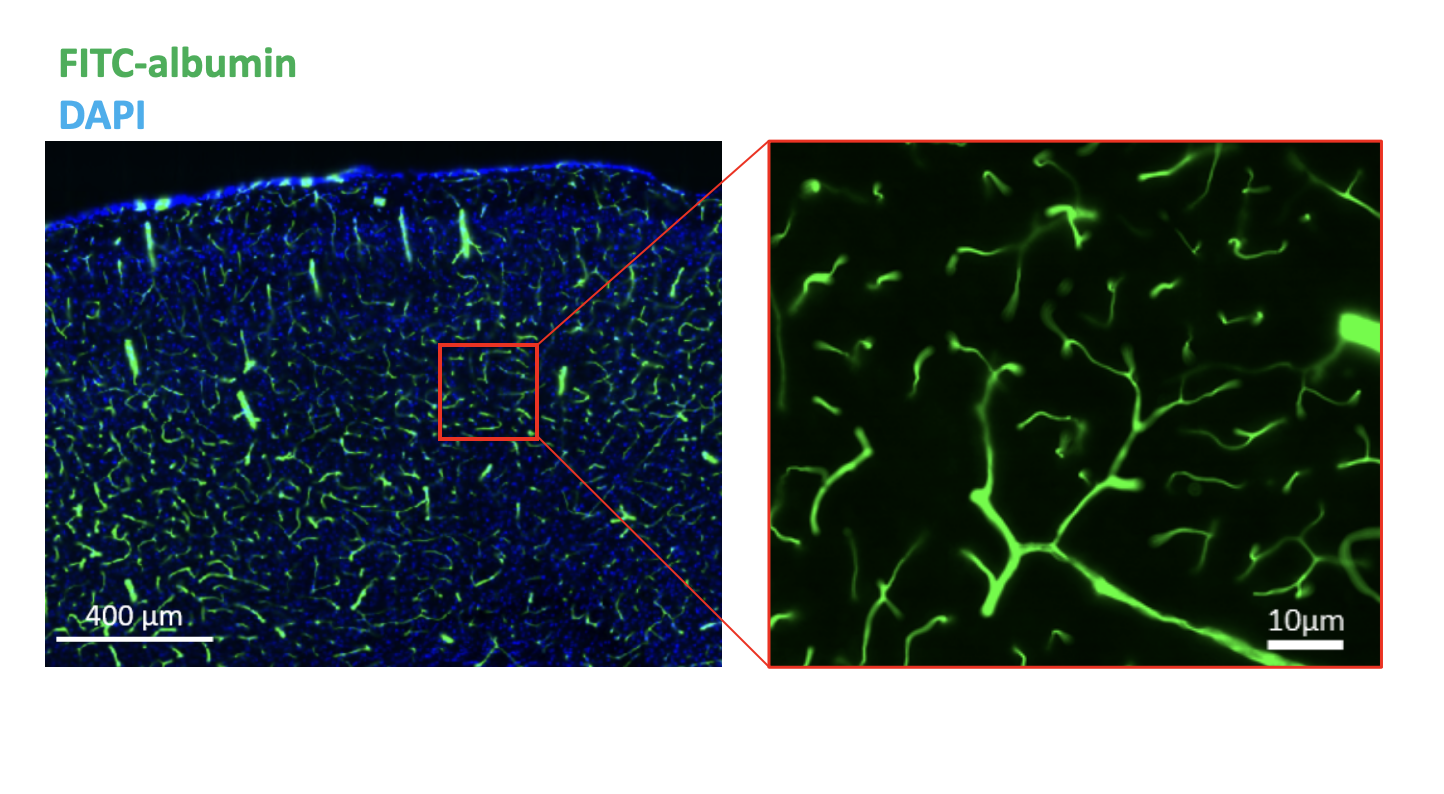Can you describe the aim of your research in 10 words?
To understand how blood vessels contribute to brain function.
Tell us more:
My interest lies in understanding how capillaries respond to hormones such as insulin in normal health and how this response changes with disease.
Based on what we know so far, insulin is likely to have several effects in the brain but whether it acts on blood vessels to increase blood flow in specific areas has never been investigated.
We are also interested in understanding whether insulin may act on larger vessels to control overall perfusion or whether the effects are more subtle and involve pericyte-mediated capillary diameter regulation.
To understand this, we are currently using real-time contrast enhanced ultrasound to measure brain blood flow changes in vivo in the fully intact rodent head (no craniotomy needed) in response to insulin in healthy or obese rodents.
We are coupling this in vivo imaging with a technique that lets us generate a fluorescent vascular cast at the end of the experiment that we can then use to interrogate region-specific vascular changes using microscopy.

The left image shows a fluorescent vascular cast of the cortex where blood vessels are visualised in green. The right image shows a high magnification of the green (vascular) signal where on arteriole branches off into several smaller capillaries. Blue indicates cell nuclei. Unpublished data.
We’re also investigating how common anti-diabetic drugs such as metformin and exenatide improve stroke outcomes and whether this is linked with normalisation of brain vascular responses post-stroke. We have previously shown that metformin improves microvascular function in peripheral organs in obesity/type 2 diabetes (T2D) but whether this also occurs in the brain is not known.
Our work focuses on understanding these microvascular changes in the brain because cerebral microvascular dysfunction has been linked with obesity, T2D, stroke and Alzheimer’s Disease.
What have you discovered in this area so far?
My lab has developed a non-invasive ultrasound technique that allows for dynamic and high-frequency blood flow imaging in intact brain vasculature.
This is crucial because we can now see real-time brain blood flow changes in response to stimuli such as insulin as well as how these responses change with disease. We are currently using this technique to understand brain blood flow changes in health, obesity, and disease states such as T2D and stroke.
In the context of ischaemic stroke, we are paradoxically finding that blood flow is increased at the time of recanalisation where we expected to see reduced blood flow. Interestingly, in the presence of comorbidities like T2D, this blood flow response post-stroke is further increased and appears to predict the extent of brain damage. We are working on understanding why this is and the significance of this vascular response to increased brain damage.
How could your work affect patient care?
The primary application of our ultrasound technology so far has been in the context of ischaemic stroke. We are beginning to understand more about blood flow changes in the seconds/minutes after a clot is removed and blood flow to the brain is restored.